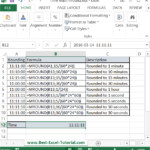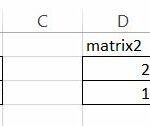Mastering Rank in Excel: A Comprehensive Guide
Mastering the Rank function in Excel is crucial for anyone looking to organize, analyze, and understand data in terms of its position or standing relative to other data points. The Rank function helps to determine the rank of a number from a list of numbers – its size relative to other values in the list. Here’s a comprehensive guide to understand and effectively use the Rank function in Excel:
Understanding Rank Function
The RANK function in Excel determines the position of a value within a dataset relative to other values.
Excel offers two primary ranking functions:
RANK.EQ (equivalent to the older RANK function) and RANK.AVG. Both functions share the same syntax: =RANK.EQ(number, ref, [order]) and =RANK.AVG(number, ref, [order]), where number is the value to rank, ref is the range of values to compare against, and [order] (optional) specifies the ranking order (0 or omitted for descending, any other number for ascending).
The key difference lies in how they handle ties: RANK.EQ assigns the same rank to tied values (resulting in skipped ranks), while RANK.AVG assigns the average of the ranks that would have been assigned.
Using Rank Function
To use the RANK function, enter your data in a column. In an adjacent column, enter the RANK.EQ or RANK.AVG formula, referencing the cell containing the value you want to rank as the number argument and the entire data range as the ref argument.
For descending order (highest value ranked 1), either omit the [order] argument or set it to 0. For ascending order (lowest value ranked 1), set the [order] argument to 1. Then, drag the formula down to apply it to all values in your dataset.
Applications of Rank:
- Rank sales performance, efficiency metrics, or other business KPIs to identify leaders and laggards.
- Determine class standing or percentile ranks for students based on scores.
- Rank companies or investments based on profitability, growth, risk, or other financial metrics.
The RANK function is commonly used for ranking sales figures, exam scores, or other numerical data where relative position is important. However, be aware that if the ref range contains non-numeric values or blank cells, RANK may return errors.
Ensure your data is clean and consistent before using the function.



